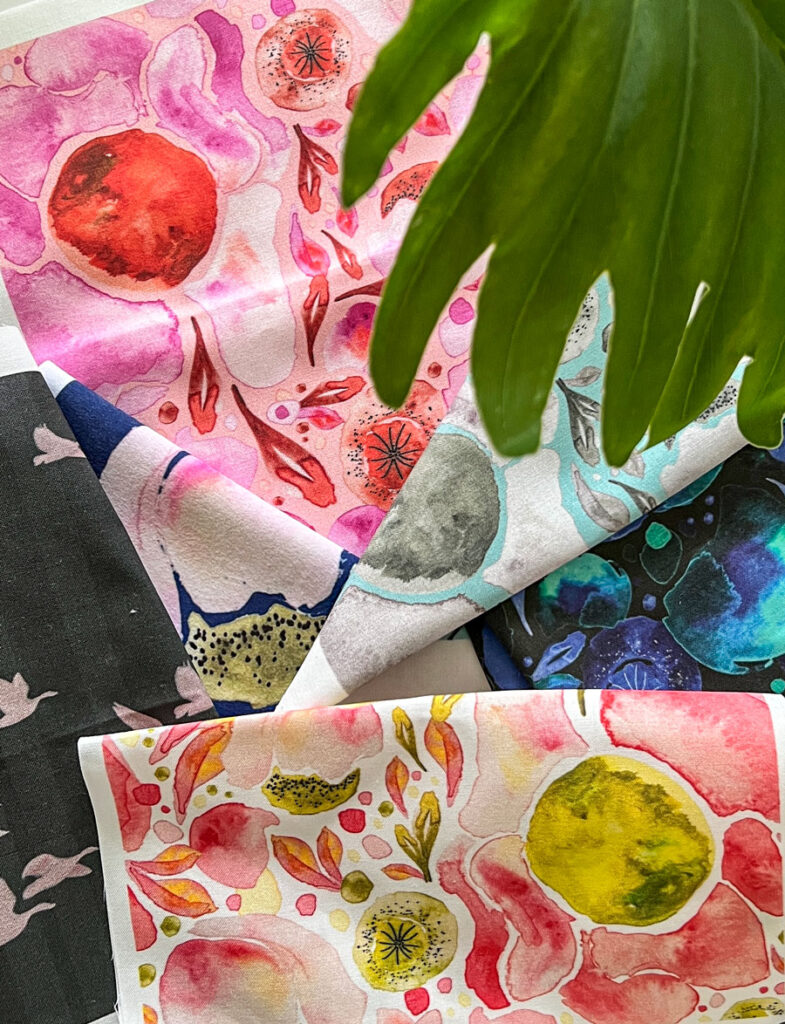Can You Make Indoor Fabric Safe for Outdoors? Learn How!
You might think that making your cozy indoor fabric into outdoor fabric sounds like it can’t be donet. But trust me; it’s actually pretty easy!
With a little guidance, a few easy-peasy steps, and the right materials, you can breathe fresh air into your indoor fabrics, making them work for your outdoor spaces. Let’s make your patio the talk of the town, shall we?
The process of weatherproofing your indoor fabrics begins by addressing common outdoor hazards such as water damage, sun fading, and general wear and tear. To help protect your fabrics from these elements, it’s essential to take a few precautions. Consider using a fabric sealant, such as Scotchgard™, which can make your fabric waterproof and outdoor safe.
I tested a bunch, and here are my top four picks for protecting fabric outdoors.

This post contains some affiliate links for your convenience. Click here to read my full disclosure policy. Thanks for supporting Bloom in the Black!
By taking the time to repurpose your indoor fabrics, you can easily create beautiful and functional outdoor living spaces without breaking the bank or making drastic changes. Remember that the key to success lies in carefully selecting weather-resistant materials and taking care of your fabrics to ensure they last as long as possible.
Understanding Outdoor Fabrics
When looking to use fabrics outdoors, it’s important to understand the differences between indoor and outdoor fabrics. Outdoor fabrics are designed to withstand harsh weather conditions and increase durability. In this section, we’ll explore the materials and durability of outdoor fabrics and their weather and UV resistance.
Materials and Durability
Outdoor fabrics, such as Sunbrella, canvas, and vinyl, are made of higher-quality materials than indoor fabrics. These materials are designed to be stronger and more resilient, with properties that allow them to hold up better in outdoor environments. Some of the key features of these materials include:
- UV-resistant dyes: Outdoor fabrics use UV-resistant dyes to prevent fading when exposed to sunlight. This ensures that the colors remain vibrant for a longer period compared to indoor fabrics.
- Mildew resistance: Moisture is a common issue for outdoor fabrics, but many are treated to resist mildew and prevent damage from damp conditions.
- Easily cleaned: Outdoor fabrics can often be cleaned simply by brushing off dirt or with a mild soap and water solution, making them low maintenance compared to indoor fabrics.
Weather and UV Resistance
Weather and UV resistance are crucial features for any fabric you want to use outdoors. The materials found in outdoor fabrics, such as Sunbrella or canvas, are engineered to withstand exposure to sun, rain, and other environmental elements. Here’s how outdoor fabrics provide weather and UV resistance:
- UV protection: As mentioned earlier, outdoor fabrics use UV-resistant dyes to maintain their colors. Additionally, outdoor fabrics have a higher UV protection factor, meaning they can block a larger percentage of harmful UV rays from penetrating the fabric.
- Water repellency: Many outdoor fabrics are treated with a water-repellent finish so that rain and moisture simply bead up and roll off. This keeps your outdoor cushions and furniture dry and prevents damage from water-related issues such as mold and mildew.
- Breathability: Certain outdoor fabrics are designed to be breathable, which helps prevent the buildup of excess heat or condensation. This not only increases your comfort in warm weather but also protects the fabric from trapping moisture and leading to mildew growth.
Did you know you can also paint indoor furniture for outdoor use?
Transforming Indoor Fabrics for Outdoor Use
Choosing the Right Indoor Fabric
To begin your journey in transforming your indoor fabrics for outdoor use, start by selecting the right indoor fabric. Consider choosing fabrics with tighter weaves and those made from synthetic materials like polyester, as they usually offer higher resistance against water, rot, sun, and the elements. Opting for light-colored fabrics can also help minimize the damage from sun exposure, as they tend to absorb less heat.
Waterproofing Techniques and Products
After selecting a suitable indoor fabric, it’s crucial to utilize effective waterproofing techniques and products to make your fabric more resilient to outdoor conditions. One popular method is treating your fabric with a waterproof spray, such as Scotchgard™. Apply the spray evenly across the fabric surface, holding the can 6 to 8 inches away while lightly overlapping each pass. This will ensure thorough coverage without applying the product too heavily.
Additionally, applying a sealant on your fabric can help prevent water penetration and protect it from mold and mildew. My top four fabric protectors can be found on Amazon, and you should follow the manufacturer’s instructions for optimal results.
Maintenance and Cleaning
Proper maintenance and cleaning of fabrics you use outdoors will increase their lifespan and keep them looking fresh. Regularly remove dirt, debris, and mildew to prevent their growth by using a scrub brush with a mixture of laundry soap and water. For more stubborn stains, you can use an enzymatic cleaner specifically designed for fabrics, but remember to always test it on a small inconspicuous area beforehand.
When it comes to water-resistant fabrics like your newly-treated indoor-turned-outdoor pillows, it’s essential to allow them to air dry after cleaning or exposure to rain. This will help prevent water from being trapped in the fabric, leading to potential issues like mold and mildew.
By choosing the right indoor fabric, applying waterproofing techniques and products, and taking proper care of your outdoor fabrics, you can confidently bring your favorite indoor fabrics to your outdoor spaces without compromising their durability and appearance.
